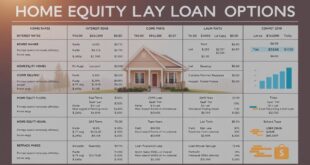Need flexible funding to tackle life’s big plans? Whether you’re consolidating debt, renovating your home, or handling surprise costs, today’s lending market offers solutions tailored to your needs. Many providers now offer unsecured financing with competitive terms, letting you access money without collateral.
Major lenders like Discover, Citi, and Wells Fargo provide APRs starting as low as 6.74%, with borrowing limits ranging from $3,000 to $100,000. Repayment timelines stretch from 12 to 84 months, giving you control over your budget. This variety means you can match a plan to your credit profile and timeline.
Choosing the right option involves more than just the rate. Your goals, financial history, and preferred payment schedule all play roles. This guide simplifies the process—explaining eligibility, application steps, and strategies to secure favorable terms.
Key Takeaways
- Unsecured financing requires no collateral and suits diverse needs
- APRs vary widely (6.74%–24.99%) among top lenders
- Borrow $3,000–$100,000 with repayment terms up to 7 years
- Compare offers based on credit score and repayment flexibility
- Streamlined applications make securing funds faster than ever
Understanding the Basics of Personal Loans
Let’s break down how unsecured financing works and why it might fit your plans. These financial tools let you borrow money without tying it to your home, car, or other assets. You receive a lump sum upfront and repay it through fixed monthly payments over months or years.
What Is This Type of Financing?
An unsecured loan doesn’t require collateral, meaning your assets stay safe if payments get tricky. Lenders approve these based on your credit history and income instead. For example, major banks offer amounts from $3,000 to $100,000 with repayment timelines stretching up to seven years.
Core Advantages to Consider
Fixed interest rates keep monthly payments predictable, making budgeting simpler. Many providers deposit funds within one business day after approval. This speed helps when handling urgent costs like medical bills or home repairs.
| Feature | Unsecured Option | Secured Option |
|---|---|---|
| Collateral Required | No | Yes |
| Typical APR Range | 6.74%–24.99% | 3.50%–15.00% |
| Funding Speed | 1-2 Days | 3-7 Days |
While rates might be higher than secured choices, the trade-off comes in flexibility and reduced risk. Use these funds for almost any purpose—from consolidating debt to upgrading appliances. Just ensure your credit score meets the lender’s minimum requirements for approval.
Why Choose Personal Loans for Your Financial Goals
When life throws curveballs or opportunities, having adaptable funding matters. Unsecured financing shines by offering versatile solutions for everything from urgent car repairs to dream weddings. Let’s explore why this option stands out.
Flexibility for Various Needs
Imagine merging five credit card balances into one lower-rate payment. That’s the power of debt consolidation—a top reason people choose this route. Homeowners also tap these funds for kitchen remodels, often seeing property values rise 10-15% post-renovation.
Unexpected costs? A recent survey found 56% of Americans couldn’t cover a $1,000 emergency. Unsecured options act like financial airbags, providing quick cash for medical bills or job transitions. Even joyful moments benefit—couples fund 30% of weddings through this method.
“Modern financing adapts to your life, whether you’re replacing a furnace or studying abroad.”
No Collateral Required
Unlike home equity lines, you won’t risk losing assets if budgets tighten. Renters and homeowners alike appreciate this safety net. Approval hinges on creditworthiness, not property ownership.
| Scenario | Traditional Option | Unsecured Solution |
|---|---|---|
| Home Updates | Home Equity Loan | Renovation Funds |
| Medical Bills | Credit Card | Fixed-Rate Payment |
| Career Break | 401(k) Loan | Transition Funding |
Need funds for an adoption or last-minute vacation? These plans cover gaps savings can’t. Just remember—compare offers to find terms matching your timeline and budget.
Personal Loans and Credit: What You Need to Know
Your financial fingerprint matters when securing funds—here’s how to keep it spotless. Lenders peek at your credit history like detectives reviewing clues. Smart moves today can unlock better rates tomorrow.
Impact on Your Credit Score
Checking rates? Most lenders use soft inquiries that leave no mark. These previews help compare offers without dinging your credit score. Save formal applications for when you’re ready—each triggers a hard pull that might drop scores by 2-5 points.
Multiple applications within 14 days often count as one inquiry. Time your moves wisely. Higher scores typically mean lower APRs—a 720+ rating could save thousands versus a 650 score.
Managing Your Credit History
Boost approval chances by polishing your financial profile first. Pay down card balances below 30% of limits. Fix errors on reports—1 in 5 Americans find mistakes affecting their credit.
| Action | Effect | Timeline |
|---|---|---|
| Soft Inquiry | No score change | Instant |
| Hard Inquiry | Temporary dip | 2 years |
| On-Time Payments | Score boost | 6+ months |
Consistent payments build positive credit history over time. Set autopay to avoid slips. Remember—this financial tool can help or hurt. Use it like a ladder, not a crutch.
Exploring Rates, Terms, and Fees
Crunching the numbers helps you avoid surprises down the road. Lenders structure costs through three main factors: rates, repayment timelines, and additional charges. Let’s decode how these elements work together.
Understanding APR and Payment Calculations
The Annual Percentage Rate (APR) reveals the true cost of borrowing. It combines interest rates with origination fees or other charges. Discover’s fixed APRs from 7.99% to 24.99% show how creditworthiness affects pricing.
Consider a $20,000 amount at 8.99% APR over 84 months. You’d pay $415 monthly, totaling $24,900. Shorten the timeline to 36 months, and payments jump to $639—but you save $3,300 overall.
| Lender | Amount | Term | APR | Monthly Cost |
|---|---|---|---|---|
| Discover | $20k | 84 mo | 8.99% | $415 |
| Wells Fargo | $16k | 36 mo | 12.99% | $539 |
Watch for fees that inflate costs. Some providers charge 1-6% origination fees upfront. Others penalize late payments or early payoffs. Fortunately, many major lenders now skip these charges entirely.
Your rate depends on four factors:
- Credit score (aim for 670+)
- Income stability
- Existing debts
- Banking history with the lender
Always compare APRs—not just interest rates—when shopping. This approach accounts for all costs, helping you spot the best-value offers.
How to Effectively Use Your Personal Loan
Smart financial moves start with using borrowed funds strategically. Whether streamlining existing obligations or tackling new projects, these financial tools offer structured solutions. Let’s explore proven strategies to maximize their impact.
Streamline Multiple Balances
Combining high-interest credit cards into one fixed-rate plan simplifies money management. For example, merging three cards charging 18-24% APR into a 12% APR option could slash interest costs by 40%. Citi’s consolidation programs help users save an average of $2,300 annually through this method.
| Current Debts | New Plan | Monthly Savings |
|---|---|---|
| $15k at 22% APR | $15k at 11% APR | $180 |
| 4 Payments | 1 Payment | 3 Fewer Due Dates |
Calculate potential savings by:
- Adding all current minimum payments
- Comparing totals against new estimated costs
- Factoring in faster payoff timelines
Enhance Living Spaces Smartly
Kitchen upgrades and bathroom remodels yield 60-80% return on investment when selling homes. Unlike equity-based options, these projects don’t require property appraisals or lengthy approvals. Focus on improvements that:
- Boost energy efficiency (new windows, insulation)
- Increase functional space (deck additions)
- Modernize high-traffic areas (flooring, lighting)
One homeowner increased their property value by $28,000 after a $15,000 bathroom renovation. Always set clear budgets and timelines before starting projects.
“Treat consolidation as a reset button—close paid-off cards to avoid repeating debt cycles.”
Application Process and Eligibility Requirements
Securing funds starts with understanding what lenders need from applicants. Most providers follow similar baseline rules but add unique twists based on their policies. Let’s map out the essentials to streamline your approval journey.

Minimum Criteria for Approval
Three factors open doors to most financial institutions:
- Legal status: U.S. citizenship or permanent residency
- Age: Minimum 18 years (21 in some regions)
- Income: Steady earnings meeting provider thresholds
Discover requires at least $25,000 annual income and a valid Social Security number. Wells Fargo prioritizes customers with 12+ month account histories. Citi bars co-applicants and enforces stricter rules for newer clients.
| Lender | Key Requirement | Unique Rule |
|---|---|---|
| Discover | $25k income | Computer/mobile access |
| Wells Fargo | Existing customer | 1-year relationship |
| Citi | No co-signers | Puerto Rico: age 21+ |
Modern applications take 5-15 minutes online. Many lenders use soft checks for initial rate estimates—no credit score impact. Prepare pay stubs, tax forms, or bank statements to verify earnings quickly.
Existing banking relationships often unlock perks. Loyal customers might skip document uploads or get funds within hours. Always compare pre-qualified offers before submitting formal requests.
Comparing Personal Loans in the United States
Finding the right financing requires matching lender strengths to your financial profile. Major providers offer distinct advantages depending on credit scores and borrowing needs.
Key Lender Comparisons
Top institutions cater to different credit tiers. Discover serves those with excellent scores (660+), while Upstart considers applicants with fair credit. Review these standout features:
| Lender | APR Range | Amounts | Unique Perks |
|---|---|---|---|
| Discover | 7.99%-24.99% | $2.5k-$35k | No origination fees |
| SoFi | 8.99%-29.49% | $5k-$100k | Unemployment protection |
| LendingClub | 7.9%-35.99% | $1k-$40k | Direct creditor payments |
| Wells Fargo | 7.49%-23.24% | $3k-$100k | Existing customer discounts |
Tools and Resources for Rate Estimation
Online calculators simplify payment planning. NerdWallet’s comparison tool shows prequalified rates from 15+ lenders instantly. Most platforms use soft checks—your credit score stays safe while shopping.
Three tips for effective comparisons:
- Check for origination fees (0%-6% of loan amount)
- Confirm repayment flexibility (skip-a-pay options)
- Review BBB ratings and recent customer feedback
“Always request formal offers in writing—verbal quotes often exclude hidden costs.”
Conclusion
Finding the right financial solution requires smart planning and informed choices. Unsecured financing offers adaptable options for everything from home upgrades to emergency costs—no collateral needed. Many lenders deposit funds as soon as the next business day after approval, with institutions like Wells Fargo delivering same-day access 96% of the time for existing customers.
Comparing multiple providers helps secure the best combination of rates, terms, and fee structures. Look for transparent lenders that skip origination charges and offer flexible repayment timelines. Always verify eligibility requirements and funding timelines before applying.
Remember: Your credit history and financial goals shape what’s possible. Use online tools to estimate payments and review FAQs to clarify doubts. With careful research, you can confidently choose a plan that aligns with your timeline and budget.
 Website Teknologi Terupdate
Website Teknologi Terupdate







